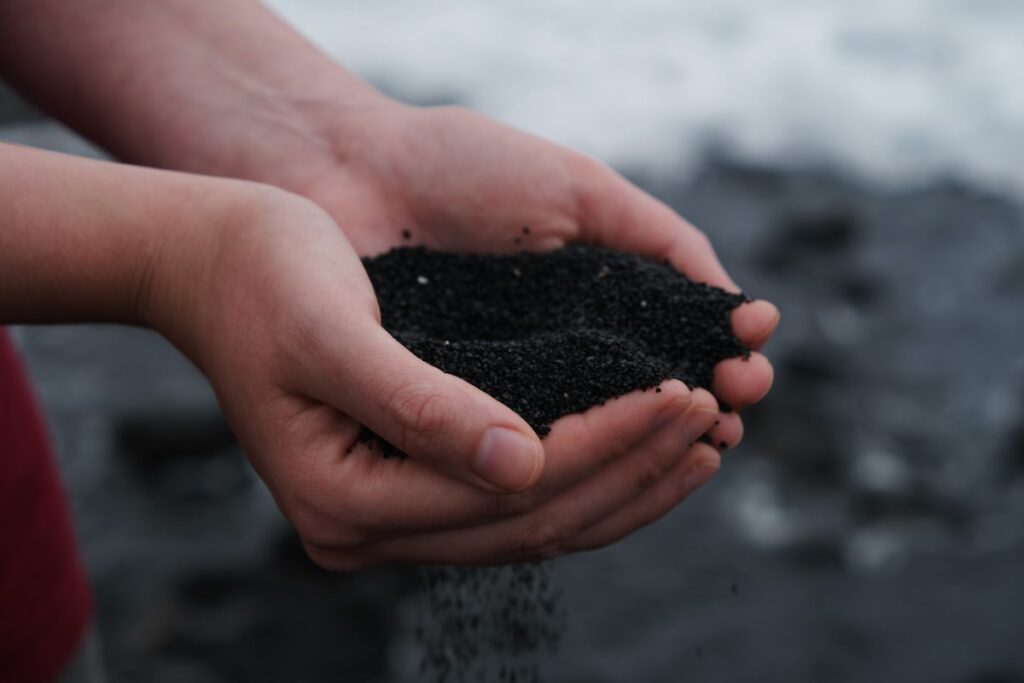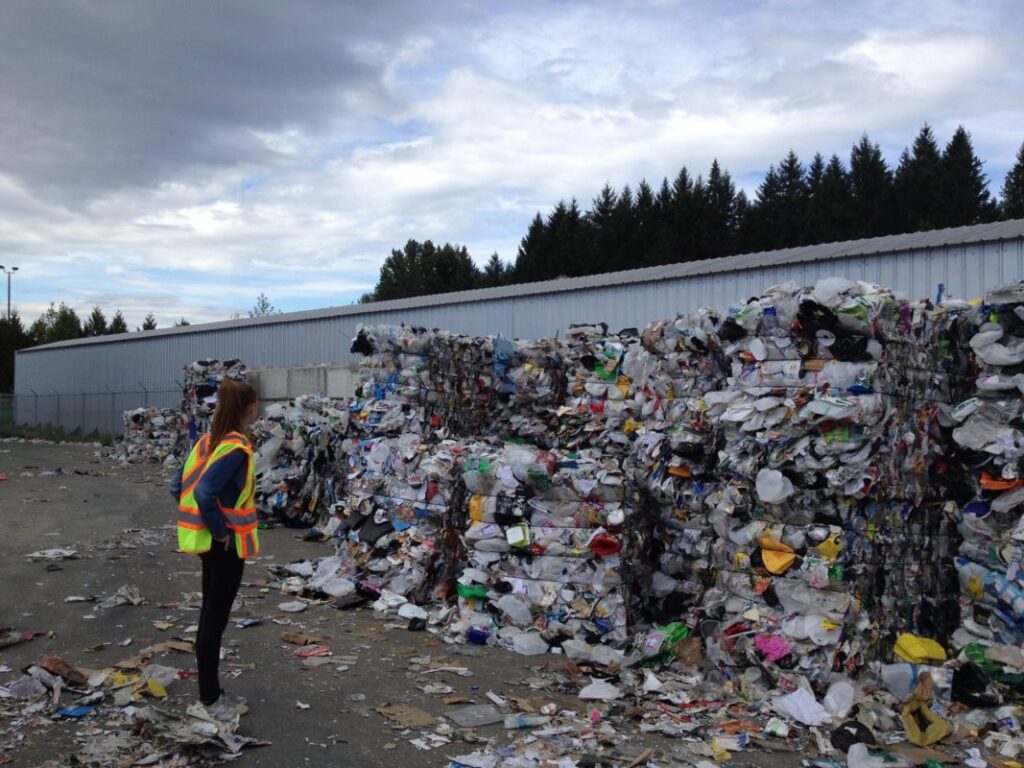Large corporations are turning to compostable packaging to improve their environmental credentials, seeing it as a direct alternative to current single-use plastic packaging. The industry was valued at US$ 81.70 billion in 2020, and it is expected to grow at a rate of 6.35% per year to reach US$ 118.85 billion by 2026. This growth has been driven by increasing focus on sustainability by MNCs, growing consumer concern as well as single-use plastic bans legislation such as the EU Single-Use Plastics Directive. Below we dive into the basics of compostable packaging, such as: is it really green? Why should you use it? What are the pros and cons?
Why should I use compostable packaging?
Compostable packaging is becoming increasingly popular due to its end-of-life performance, where it is possible for the materials to be broken down by microorganisms into carbon dioxide, water, inorganic compounds, and biomass which can be used as natural fertiliser for agriculture. This occurs at a rate consistent with similar organic materials and is usually accompanied by a timeframe for this process, such as 180 days.
How environmentally friendly is compostable packaging?
Under specific conditions, compostable packaging provides a great sustainable alternative, opening up an end-of-life route without persistent environmental pollution. In particular, those made of renewable resources, or even better waste products, align more closely with the circular economy.
Quality finished compost acts as a natural fertiliser, enriching soil, helping to retain moisture and suppress plant diseases and pests. It also reduces the need for chemical fertilizers, many of which are harmful to the environment.

However, there are a number of reasons why compostable packaging may fall short of the ideal – regulation, education and availability.
As “compostable” has no legal definition in many countries (although this is increasing) there is scope for companies to overexaggerate the environmental benefits their products have. This ties together with the myth of biodegradability – a particular issue with the consumer public. For many, compostable is equivalent to naturally biodegradable, which simply isn’t true. This misassociation can lead to issues where consumers do not recognise the true environmental impacts their actions (and inactions) are incurring. Even for those who are well-versed and want to compost, there simply isn’t a great deal of access to composting facilities. In the US, only 2% of the population has access to curbside programs. An extremely low figure given that curbside collection will become more important as urban populations grow.
Industrially compostable vs Home Compostable: what’s the difference?
Not all compostable claims are created equal, which is why any compostability claims must be clarified as to whether they are industrially compostable or home compostable.
Industrial composting occurs in large facilities that can maintain the necessary environment for breaking down the material. This usually involves temperatures of 50°C and 60°C for at least 6 weeks.
The two most common methods of industrial composting are Windrow and Aerated Static Pile (ASP). Windrows are long rows of organic material that must be turned regularly to improve porosity and oxygen content, mix in or remove moisture, and redistribute cooler and hotter portions of the pile. ASP is a newer technology that does not require turning. These systems generally use perforated piping to control the amount of oxygen getting to a compost pile, which can result in faster biodegradation times than traditional Windrow systems.
A third method that is used by Cedar Grove Composting in Washington is “In-vessel, positive aeration, membrane laminate technology”, commonly known as the Gore system.
All three of these methods require diligent management of temperature, oxygen, and carbon/nitrogen ratios to produce quality finished compost. The time required for compostable products to break down varies with the type of facility, the specific materials used to make the product, and the combination of time, temperature, and moisture levels.
Industrially compostable materials do not break down outside of these specific environments, persisting in the environment and causing similar pollution problems to traditional fossil-fuel-derived plastics.
A home composting environment is usually akin to what could be recreated in someone’s backyard, so conditions are more variable and expensive industrial equipment is not required. When a product is labeled as “Home compostable”, this is under ideal laboratory conditions (for which the certifications are only available from the EU or Australia) so actual composting rates will vary depending on the local climate.
Due to the less stringent requirements for the breakdown of home compostable products, these will always be preferable vs industrially compostable products, where composting rates can actually be fairly low.
What are the issues with industrial composting?
The first reason is a lack of infrastructure. In the US, only 2% of the population actually has access to curbside composting. Furthermore, different municipal areas will have different rules around what can be accepted into composting facilities. For example, only some 150 US industrial composting sites accept bioplastics (commonly used in packaging to replace PET), with all the composting facilities in the state of Oregon no longer accepting it.
Secondly, contamination. To the regular consumer, telling the difference between a bio-plastic PLA cup and a regular plastic PET cup is near impossible. Subsequently separating out the bio-plastics from the plastics at the composting facility requires additional energy and manpower, which makes it uneconomical. “It’s not practical … to sort out 50 plastic cups mixed in with 100 identical compostable cups,” said Jack Hoeck, VP of environmental services at Rexius.
Thirdly, there is little demand for the end product. Corn-based PLA breaks down into mostly water and carbon dioxide – essentially disappearing. There’s also the issue of perfluoroalkoxy alkanes (PFAs) – highly toxic ‘forever’ chemicals that are in some compostable products. These chemicals can then transfer into the compost and contaminate soil and groundwater.

Photo by Vivianne Lemay on Unsplash
So, why should we use compostable packaging?
Compostable packaging currently suffers from a ‘chicken-and-egg’ problem, where there is little investment to expand capacity due to low volumes and there are low volumes due to lack of facilities. However, compostable packaging does at least have some scope for better outcomes at end of life, which will only increase as more companies take to compostable packaging.
Policymakers and industry leaders are seeking to leverage one of the main advantages of compostable packaging – that it can be processed along with food scraps etc – to tackle both plastic waste and food waste. Organic waste is a major issue for climate-focussed leaders as it is frequently the largest contributor to landfills and releases methane on degradation – a greenhouse gas 80 times more potent than CO2.
Currently, the processing of both waste streams is prone to contamination, severely limiting the efficiency of composting or recycling these resources. For example, in Germany, biodegradable plastics will not be composted even if delivered to a composting facility in more than half of instances; and, in the United Kingdom, composters will not accept biodegradable plastics due to concern for contamination.
This has lead to a number of organizations, such as the Biodegradable Products Institute, European Bioplastic, Wageningen Food & Biobased Research,32 and CE-Delft33, to support using compostable packaging predominantly in the food and beverage sector (the packaging for which makes up 44% of ocean plastic) where these complementary waste streams will create a co-benefit and provide enough scale to make municipal scale composting more commercially viable.
The Netherlands Institute for Sustainable Packaging (KIDV) stated, “[b]iodegradable bio-based plastics should only be used in situations where there is a co-benefit; mainly the increase in consumer separated food waste.”
This policy has gained such prominence that the US compostability body, the BPI, only certifies compostable bags that they believe “are likely to be a part of an organics diversion effort”. This means that the BPI will not certify bags for apparel or electronic goods even though they may meet their compostability requirements as “non-food packaging is unlikely to be repurposed to help divert food scraps, and therefore doesn’t make sense in a curbside organics bin.”
Conclusion
Choosing the correct packaging solution depends on each specific product and fully understanding its end-of-life attributes, especially in the view of the end consumer. Due to the issues with contamination, compostability is not always the appropriate attribute if it is not a co-benefit with helping keep organics out of landfills or combatting plastic pollution.
Lead image by Julia M Cameron from Pexels.






